Executives at mid-size companies often ask: “How do we get our software environment under control without a full IT overhaul?”
Good news: you don’t need to rip everything out and start over. A structured, phased approach lets you reduce costs, simplify operations, remove risks and position the business for scalable growth with minimal disruption.
Read: The 5 Building Blocks of a Winning Software Application Strategy
Step 1: Perform a complete application audit
Start with visibility. Most organizations don’t truly know how many applications they run or what each one delivers. A rigorous audit should capture:
– Application name and purpose
– Departmental ownership
– Active users and adoption levels
– Licensing costs, renewal dates and contract terms
– Integration points and data flows
– Security and compliance posture
This baseline lets you make evidence-based decisions, revealing unused licenses, duplicate tools across teams or auto-renewals that should be canceled.
Step 2: Engage stakeholders to understand real usage
Data needs context. Interview department leaders and representative end users to learn which tools are essential, which frustrate people, what gaps remain and which deployments failed to gain traction. These conversations prevent accidental removal of mission-critical systems and build the employee buy-in needed for change.
Step 3: Find redundancies and consolidation opportunities
Combining insights from the audit and stakeholder interviews, identify overlap: multiple project-management systems, separate file-sharing platforms, or several messaging tools. Consolidation reduces licensing spend, simplifies training and improves cross-team collaboration, while creating clearer visibility for leadership.
Step 4: Evaluate apps against business objectives
Every application should justify its place in the stack. Assess whether each tool advances efficiency, scalability or profitability; strengthens security or compliance; delivers measurable ROI; or aligns with long-term strategy. If it doesn’t, consider sunsetting or replacing it with something more appropriate.
Step 5: Create a rationalization roadmap
Rationalization is a program, not a one-off task. Build a phased plan to minimize disruption:
– Quick wins: cancel unused licenses, stop unnecessary auto-renewals and eliminate obvious redundancies.
– Strategic moves: consolidate platforms, migrate data and retrain teams in stages.
– Long-term shifts: replace legacy systems with modern, scalable solutions that support future goals.
Phasing changes lets you realize savings now while protecting day-to-day operations.
Step 6: Optimize through automation and integration
Once the stack is leaner, focus on making it smarter. Integrations and automation remove repetitive work, reduce errors and multiply the productivity gains from rationalization—turning a streamlined environment into a true efficiency engine.
Step 7: Establish ongoing governance
Without governance, sprawl returns. Put processes in place to preserve your gains:
– Centralized approvals for new applications
– Regular audits of usage and licensing
– Clear policies for renewals, offboarding and security checks
– Alignment of software decisions with business goals
Read: Why Business App Consolidation Matters for Compliance and Governance
The payoff
Companies that skip rationalization often suffer from uncontrolled spending, fragmented workflows, constant IT firefighting and greater cyber risk. With executive sponsorship and a deliberate process, mid-size organizations can achieve measurable results:
– Reduced costs
– Simplified IT support
– Higher productivity
– Lower cyber risk
– A platform for scalable growth
Guiding companies from chaos to clarity with Cytranet
If your software environment feels chaotic, take action now. At Cytranet, we help mid-size companies uncover waste, streamline workflows and build a secure, scalable foundation for growth. Our Fractional CIOs combine business and technical expertise to deliver enterprise-level IT outcomes tailored to your company.
Request a consultation, and check out our next blog on how a Fractional CIO drives long-term software strategy success.


